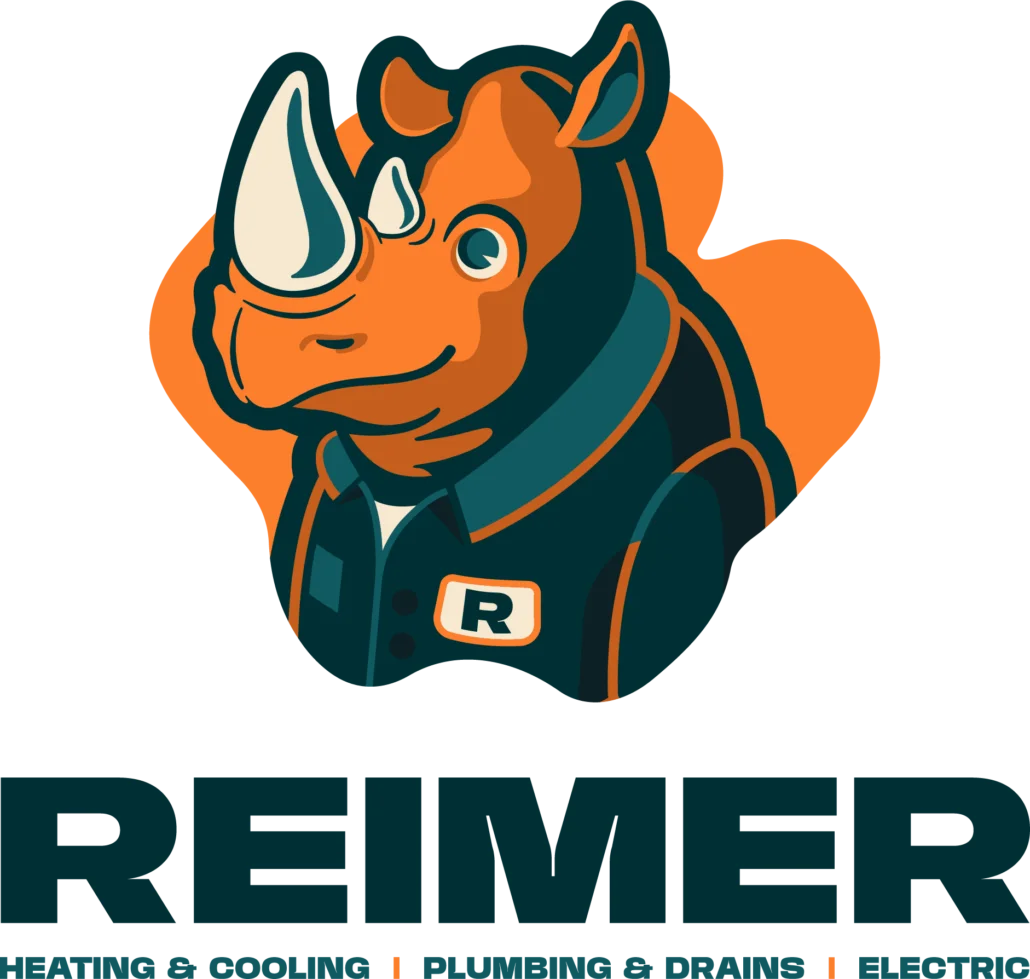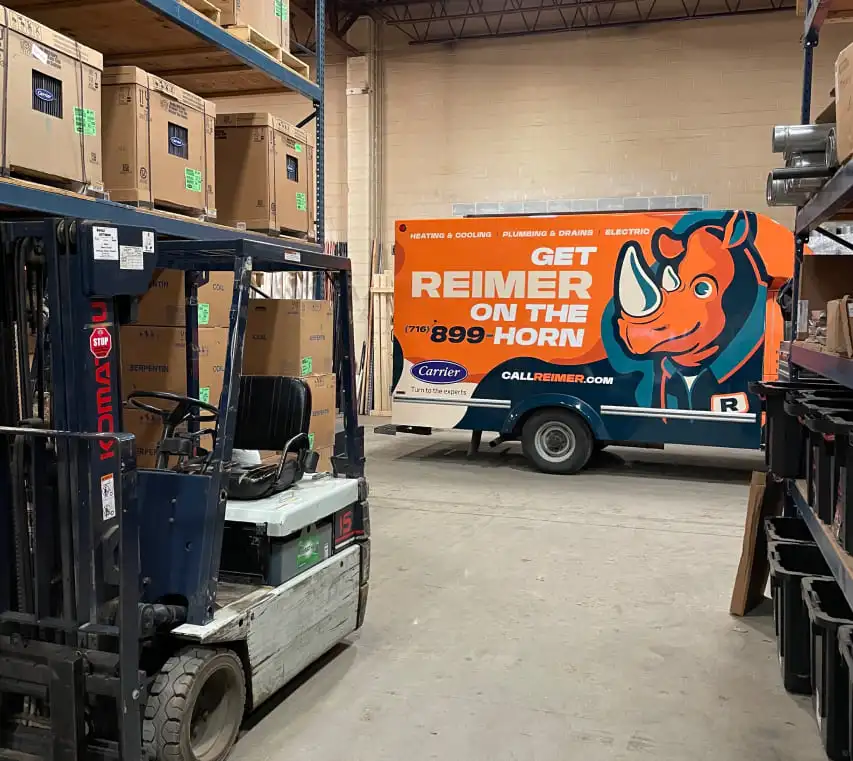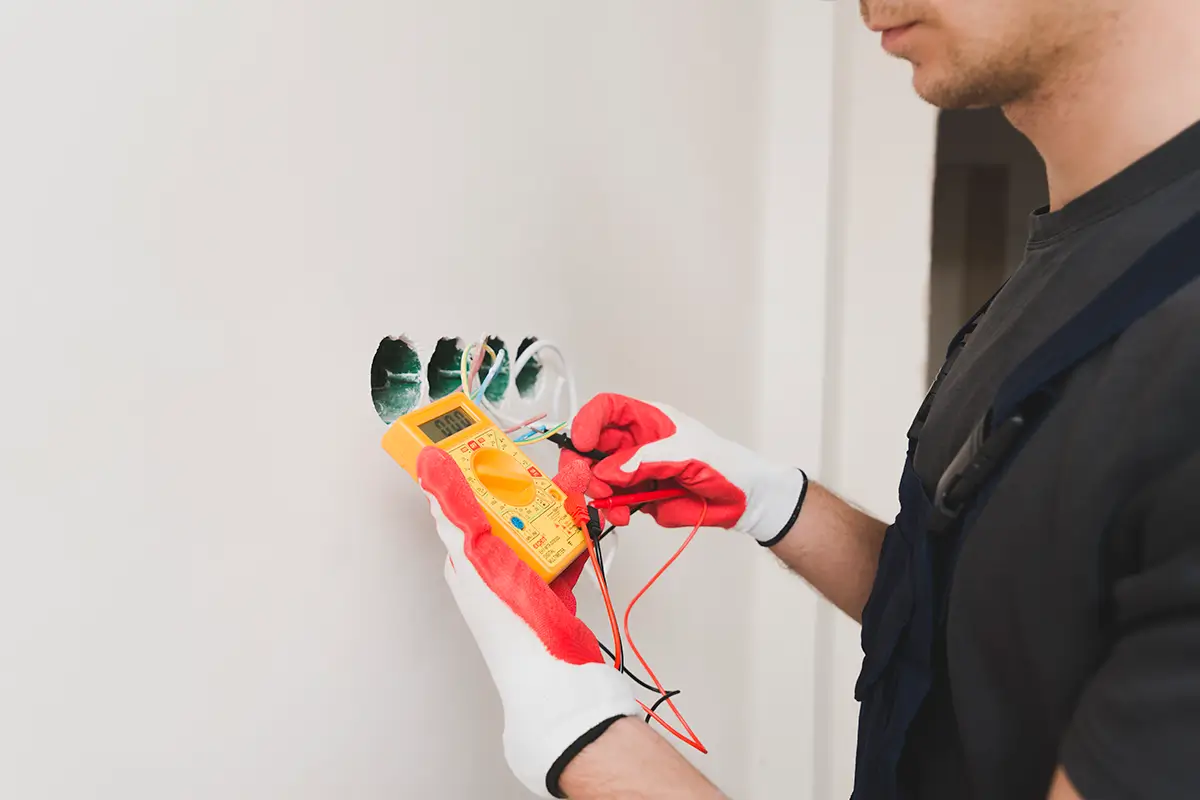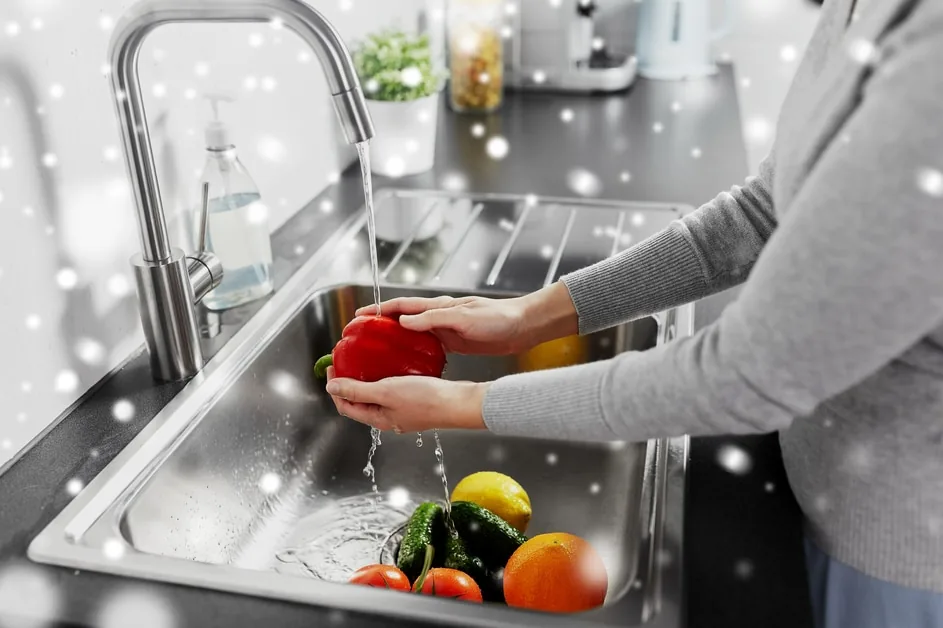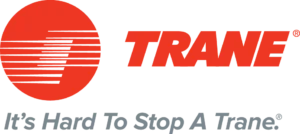We tend to take indoor air quality for granted – until allergies kick in or funky odors linger a bit too long. But what if I told you there’s an invisible force that can seriously level up the air you breathe at home? I’m talking about ultraviolet (UV) light purification.
These specialized lighting systems may seem unassuming, but they pack a punch when it comes to zapping airborne baddies like viruses, bacteria, and mold spores. By unleashing UV’s germ-destroying prowess, you get a mighty yet natural way to improve your indoor breathing atmosphere.
Not just for industrial use anymore, UV air purifiers are finding their way into modern homes. Let’s dive into the science behind how UV works its sanitizing magic, explore the different purifier options out there, and see why adding this discreet air-cleaning muscle to your place might be a breath of fresh air.
Understanding UV Light and its properties
Before we get too deep into the air-cleaning capabilities, let’s cover the basics – what exactly is UV light? It stands for ultraviolet radiation, an invisible part of the electromagnetic spectrum that gives off shorter wavelengths than visible light.
While UV rays are imperceivable to the naked eye, our skin has definitely felt its presence in the form of sunburns. That’s because UV is divided into three main bands with different wavelength ranges and energy levels:
UVA
Out of all the UV bands, UVA rays are the most pervasive – bombarding us with around 95% of the UV radiation reaching the Earth’s surface. They maintain relatively consistent intensity during daylight hours, which is why they are such a major contributor to premature skin aging over time.
While the sun’s peak overhead intensity occurs around midday, UVA is still present in high doses in the morning, afternoon, and on overcast days when other UV rays are blocked. This persistency is what makes proper UVA protection with clothing, shade, and sunscreen so crucial.
UVB
In contrast to UVA, the UVB band fluctuates drastically based on sun conditions and geographic location. In fact, very few UVB rays make it through the atmosphere during winter months at higher latitudes.
The prime time for maximum UVB bombardment is during the summer season when the sun is highest in the sky, especially around midday. This intense but periodic window is when unprotected exposure can lead to rapid, acute sunburns for those unprepared.
UVC
The supercharged UVC rays are intriguing given their immense air purification potential, but also because they are virtually undetectable on Earth’s surface. That’s thanks to the ozone layer filtering out 100% of UVC radiation before it reaches us.
However, at very high altitudes above the ozone layer, UVC does make an appearance – which is part of why unprotected space missions can be so hazardous to human life. Down here on the ground though, the only way to utilize UVC’s germ-blasting power is via man-made UV lamps in enclosed settings like air purifiers.
A Purifying History Lesson
While modern air purifiers leverage UVC’s germ-fighting prowess, the ability to use UV light for disinfection has been known for over a century. As early as the mid-1800s, scientists observed its bacteria-killing effects.
In fact, one of the first major applications was using UV sanitation for food preservation and disinfecting drinking water supplies way back in the early 1900s. Hospitals and medical facilities soon followed, installing UV lamps to sanitize air and surfaces.
Fast forward to today, and researchers have unlocked new air-cleaning capabilities by optimizing UV wavelengths and designing specialized lamps and filters around them. Pretty cool evolution for an invisible part of the light spectrum!
The Science Behind UV Light and Air Purification
Now that we’ve got the UV band breakdown, let’s explore the actual mechanics of how this light spectrum goes all Bruce Lee on airborne biological pollutants like viruses, bacteria, and mold spores.
At the core, it all comes down to UV’s ability to rampage through the DNA and RNA structure of these microscopic invaders. The high-energy photons from UV rays, particularly the UVC variety, penetrate and scramble the nucleic acids that govern an organism’s replication process.
With their molecular blueprints for regeneration utterly shattered, viruses and bacteria are rendered unable to perform vital functions – let alone spread further. Think of UV as an extremely precise, yet cruel, biological wrecking ball.
Scorched Earth on Mold and Mildew
While UV shines at deactivating pathogens in air currents, its usefulness doesn’t stop there. These rays are equally adept at preventing the growth of funky airborne molds and mildew that can take root in damp areas of HVAC systems.
By continuously bathing the interior air handler components in UV radiation, any mold spores that try to settle and germinate get their growth cycle utterly disrupted. Their cellular engines stall out before colonies can spread and start releasing allergenic particles into the airflow.
The Research Results
Plenty of scientific studies have validated UV’s air-cleaning potency when the conditions are right. Research from Duke University demonstrated over 99% deactivation of viruses like influenza when exposed to UVC light sources.
Another review by the University of Boston examined decades of data, concluding UV disinfecting systems are highly effective at reducing viable airborne bacterial and fungal bioaerosols by well over 90%.
Long story short – when proper UV wavelengths, exposure levels, and equipment are combined, the power to purify recirculated indoor air is incredibly impressive based on contemporary research.
Types of UV Air Purifiers
Not a “one size fits all” kind of deal, UV air purification comes in a few different flavors depending on your needs and setup. Let’s break down the major categories:
Standalone UV Air Purifiers
These self-contained units are designed to clean the air in an individual room or small area. They work by pulling air in through an intake, bathing it in UV light to neutralize contaminants, and circulating it back out.
The big pros are ease of use and mobility – you just need to plop it in a space and flip the switch. They’re also usually cheaper upfront than integrated systems since the air dosage levels only need to be moderate.
However, standalone purifiers have limits on coverage area and treated air volume compared to whole-home solutions. You also have to be more hands-on with maintenance like cleaning filters and replacing UV bulbs regularly.
HVAC-Integrated UV Systems
For next-level, whole-home air disinfection, integrating UV lights into your HVAC system is where it’s at. These are designed with powerful UV arrays that zap any air circulating through the main supply ducts and air handler.
With HVAC integration, you’re consistently bathing 100% of your home’s air supply in germicidal UV rays for unbeatable disinfection power. Set it and literally forget it since all maintenance happens during regular HVAC tune-ups.
The tradeoffs? Get ready for a heftier installation cost since you need specialized HVAC-rated UV lights mounted directly into the air distribution system. You also need proper airflow calculations to achieve the right UV exposure to deactivate contaminants.
Key UV Purifier Features
Regardless of which type you choose, there are some critical features that separate quality UV air cleaners from the pretenders:
- UV Wavelength: Make sure it’s optimized around that 254nm UVC sweet spot
- Safety Shutoffs: Automatic shutoffs should any UV light leak occur
- UV Intensity & Dosage: Measured in microwatts to ensure sufficient pathogen deactivation
- Air Flow Rate: Higher CFM means more rapid air treatment, low CFM = longer cycles
- Lamp Life Monitor: Tracks UV bulb to proactively schedule replacements
- Clean Construction: Minimal nooks and crannies where growth can happen
Do your research on brands, certifications, and real-world testing data to get the most effective, reliable UV air purifier for your home’s needs.
Installation and Placement of UV Air Purifiers
So you’ve decided to let some UV light into your home’s air cleaning fight! Before those purification rays start zapping away though, there are some important installation considerations.
Best Practices
While standalone room units are pretty much plug-and-play, integrating UV lights into HVAC systems is a bit more intricate. This is definitely a job best left to certified HVAC pros who understand proper UV intensity calculations based on your airflow rates.
They’ll mount the UV array at the optimal location (usually the air handler interior or upper return) to bathe the entire air supply in sanitizing radiation as it circulates. Anything less than full exposure pathways can leave dead zones for pathogens to slip through.
UV lights also need direct line-of-sight to do their thing, so technicians have to position them for unobstructed illumination of the airstream. Making sure they’re angled correctly and secured tightly is crucial.
Proper Placement
For those going the standalone room purifier route, strategic positioning is key to maximizing UV’s effective coverage area. You’ll want to set it up in a central location away from walls and obstructions that could block airflow circulation.
Pay attention to your home’s airflow patterns too. It’s best to place UV purifiers near HVAC supply registers so they can cycle airborne particles through multiple disinfection passes. Just be sure to leave enough space around the unit for uninhibited air intake/exhaust.
Safety Precautions
Here’s the deal – UV rays might be germ killers, but they can also damage human cells with direct overexposure. All those skin cancer / premature aging risks we discussed earlier apply here too.
That’s why ALL UV purifiers should have automatic shutoff failsafe if the exterior casing is compromised or UV light starts leaking out. Never try installing one of these yourself unless you have proper safety gear and UV shielding know-how.
Listen to the manufacturer’s guidelines too. They’ll specify safe operating temperatures, routine lamp replacement intervals, and any other critical safety protocols for UV exposure minimization. A little prep goes a long way!
Maintenance and Safety of UV Air Purifiers
Like any hardworking air quality system, UV purifiers require some routine TLC to keep delivering peak pathogen-pulverizing performance. Neglect them for too long and you’re asking for trouble!
Maintenance 101
Let’s start with the obvious – those UV lamps have a limited lifespan. Even if the bulbs still seem to be glowing, their germ-zapping intensity gradually decreases over 9,000-12,000 hours of use. That’s why conscientious lamp replacements on the manufacturer’s schedule are crucial.
For standalone room units, that usually means an annual bulb swap by the owner. Just be sure to never touch that new UV lamp with your bare hands – the oils can cause hot spots and premature burnout. Use a clean cloth or gloves instead.
HVAC-integrated UV systems tend to last a bit longer at 18,000-24,000 hours since the airflow is more consistent. But don’t slack here – your HVAC tech should be inspecting and replacing spent lamps during regular maintenance tune-ups.
While you’re getting new UV lightbulbs installed, it’s also smart to have your contractor perform a thorough cleaning. Dust buildup on lamps acts like a window tint, reducing UV intensity over time. The same goes for any purifier surfaces or filters obstructing good airflow.
Safety Precautions
Alright, let’s reiterate – UV is straight-up dangerous if you get overexposed. That’s why there are so many safety shutoffs and interlocks built into these systems. Don’t ever try dismantling or operating a UV purifier with any of those fail-safes compromised.
When servicing UV lamps, be sure to completely disconnect power and allow components to fully cool and discharge residual radiation. Use proper personal protective gear like UV-resistant face shields and gloves. If there’s ever a lamp break or leak, evacuate and call in professionals for safe cleanup.
Beyond the equipment, you’ll also want to limit room exposure by knocking air purifiers when no one is home for extended periods. A little healthy paranoia goes a long way toward staying bathed in UV’s benefits, not hazards!
Cost and Energy Efficiency
At this point, you’re probably wondering about the cost and energy implications of using UV for air purification. It’s a fair consideration anytime you’re upgrading home systems!
Cost Comparisons
On the lower end, standalone room UV purifiers are competitively priced compared to many HEPA air purifier models on the market. The costs ramp up when integrating powerful UV lamp arrays directly into your HVAC system’s air handler for whole-home coverage.
While more expensive upfront, the long-term operating costs of UV can actually pay dividends over other purification methods. UV lamps only need periodic replacements, whereas filters for capture-based cleaners require constant swapping out.
Energy Efficiency
In terms of energy usage, most quality UV purifiers are highly efficient – using about as much power as a desktop computer or TV when actively sanitizing air. Integrating UV into HVAC can potentially reduce some system fan demands since the lights help keep coils and interior surfaces cleaner for better airflow.
Experienced HVAC pros know all the minor adjustments to maximize energy efficiency when UV is incorporated into your system’s design. Their insights ensure you get effective air cleaning without overworking equipment.
Long-Term Payoffs
While UV integration looks expensive upfront, there are some great long-term financial and preventative perks that reframe the investment as a bargain over just a few years:
- Extended HVAC lifespan from cleaner operation
- Fewer airborne pollutants to continuously clean
- Prevention of costly mold/mildew remediation nightmares
- Potential energy savings from reduced cooling/heating needs
Ultimately, getting overly cost-conscious about air purification could cost you dearly down the road if airborne contamination issues are left unchecked. Proper UV integration is preventative peace of mind.
Frequently Asked Questions (FAQ)
How Does UV Light Improve Indoor Air Quality?
It all comes down to UV light’s ability to basically scramble the DNA and RNA of nasty microscopic guests like viruses, bacteria, and mold spores. The high-energy photons emitted, especially by that killer UVC spectrum, penetrate and mangle the nucleic acids these pathogens need to survive and replicate.
With their molecular blueprints for regenerating shredded, airborne germs get deactivated on contact with UV’s purifying rays. They lose their mojo to spread through HVAC systems or indoor spaces. UV essentially disinfects in real-time as contaminated air circulates past the ultraviolet light source rather than temporarily capturing pollutants.
Is UV Light Safe to Use in Homes?
Yes – as long as you take some basic precautions! While UV is awesome at gunking up germ genomes, its high-energy photons can also damage human cells with overexposure. That’s why all UV air purifiers have tons of safety features built in.
We’re talking automatic reactor shutoffs if casings get compromised, leak detection sensors and safety interlock switches to prevent accidental startups during maintenance. Responsible manufacturers also emphasize strict lamp replacement guidelines to prevent degraded UV output over time.
Follow protocols like using PPE when servicing units and never tampering with safety failsafe, and UV purification brings all the sanitizing benefits without hazards.
Can UV Light Eliminate COVID-19 and Other Viruses?
Research into UV’s effectiveness against SARS-CoV-2, the virus causing COVID-19, is still emerging but highly promising so far. Studies from the peer-reviewed Journal of Photochemistry and Photobiology found that precisely tuned UVC exposure completely inactivated COVID-19 virus samples through RNA destruction.
This antiviral capability tracks with decades of data showcasing how UVC light obliterates the genetic material in everything from influenza strains to rhinovirus and others. While UV airborne disinfection isn’t a COVID panacea by itself, it absolutely has a crucial role to play in an overall contamination control strategy.
When properly integrated into HVAC systems and occupied spaces, UV purifiers can provenly minimize viral load and transmission risks. Just another offensive weapon in our sanitization arsenal!
How Often Should UV Lamps Be Replaced?
While UV bulb lifespans vary between manufacturers, there are some general guidelines to follow. For standalone room purifiers, the lamps typically need swapping annually or every 9,000-12,000 hours of use. You’ll start noticing diminishing air cleaning performance as that UV intensity wanes over time.
For UV systems integrated directly into HVAC air handlers, the lamps tend to last a bit longer in that protected environment – usually 18,000-24,000 hours of run time before replacement is recommended. Most HVAC techs just make it part of the normal yearly or bi-annual system maintenance routine.
The key is adhering to those lamp replacement intervals religiously. Even if bulbs appear to be lit, their germicidal UV output degrades significantly toward the end of the rated lifespan. Don’t risk decreased purification by penny-pinching on new lamps!
Do UV Air Purifiers Work Against Odors and Allergens?
While ultraviolet light is extremely effective at deactivating airborne microbes like viruses and bacteria, its benefits don’t stop there! UV air purification can also help mitigate foul odors and allergen levels circulating indoors.
How? By continuously bathing HVAC air handlers and ductwork in germicidal UV rays, these systems inhibit the growth of mold and mildew colonies that contribute to musty, dank smells. The same goes for mycotoxins and other volatile organic compounds generated by fungi that can exacerbate allergies and respiratory issues.
Additionally, UV’s ability to render airborne pathogens inert helps prevent their byproduct particles, gases, and protein matter from dispersing through indoor environments and triggering allergic reactions.
Can UV Light Improve Air Quality in Large Spaces?
Absolutely! While most UV air purifiers are designed for residential or light commercial use, the scalability of ultraviolet disinfection extends to massive indoor spaces like arenas, convention centers, and beyond. It’s all about properly mapping UV dosages to the total volumetric airflow.
By integrating higher-output UV lamp arrays into the massive HVAC systems servicing these oversized facilities, you can achieve the same real-time microbial deactivation on an industrial scale. Many cutting-edge venues have already implemented this upper-room UV sanitation to improve indoor air quality despite accommodating thousands of occupants.
The basic science remains the same as home units – using targeted UVC exposure levels to scramble airborne viruses, bacteria, and mold before they can colonize or infect people. With some basic calculations and commercial-grade UV equipment, those purification benefits effortlessly scale to arenas, airports, you name it!
Are There Any Side Effects of Using UV Light Purifiers?
The short answer is no, there aren’t any inherent side effects or health risks from using properly designed and installed UV air purifiers. These systems are completely contained and engineered with multiple safety mechanisms to prevent any direct UV exposure.
We’re talking automatic shutoffs, leak detectors, interlock switches – all designed to immediately kill power to UV lamps if their enclosures are compromised in any way. As long as you closely follow all manufacturer guidelines for operation and maintenance, those purifying UV rays stay safely focused on the airstream itself.
The only “side effect” you may notice is a slight static electrical smell during use, which is totally normal. But no ozone, no radiation leaks, nothing. Just effective air sanitation without any byproducts or risks!
How Do UV Air Purifiers Compare to HEPA Filters?
This is a great question, as HEPA and UV actually make an awesome one-two punch when combined in air cleaning systems! The two technologies are designed for slightly different purposes.
HEPA filters excel at physically capturing particulate matter like dust, dander, pollen, etc. Their tight mesh traps those larger allergens and contaminants as air cycles through. UV purifiers, on the other hand, are purpose-built to inactivate and prevent microbiological threats like viruses, bacteria, and mold spores.
By pairing a HEPA filter’s particle removal with a UV light’s ability to scramble anything bio at the molecular level, you get comprehensive air purification coverage. Many premium systems are now integrating both technologies to maximize their strengths.
What is the Installation Process for a UV Air Purifier?
For standalone room purifiers, installation is refreshingly simple – just pull it out of the box, give it a quick wipe down, find an outlet, and you’re ready to start sanitizing! Most quality units also come with an installation guide for tips on optimal placement.
Integrating a UV purifier into your home’s HVAC system is definitely more involved and best left to certified HVAC professionals. They’ll need to properly size and position the UV lamp array for maximum exposure based on your specific airflow rates and ductwork configuration.
Proper installation usually involves securing the UV array at the ideal vantage point, routing power safely, and integrating components like window rays, containment sleeves, and safety door switches. HVAC pros also ensure all integrated UV equipment meets building code and permit requirements.
So while room purifiers are DIY-friendly, whole-home UV integration demands some trained expertise to get up and running safely from the start. Don’t take shortcuts on this powerful sanitizing tech!
Stop Breathing Dirty Air! Call Reimer Today To Inquire About Our Indoor Air Quality Device
At this point, we hope it’s clear that ensuring high indoor air quality is anything but an afterthought for us. It’s a vital step in maintaining a truly healthy, comfortable living environment for our families. And when it comes to naturally eliminating those microscopic threats we inhale, UV purification is in a class of its own.
The science backs it up – ultraviolet germicidal irradiation is incredibly effective at deactivating viruses and bacteria, and preventing mold proliferation before those pollutants ever reach your lungs. Integrated directly into your HVAC systems, UV lamps get to work zapping dangers with surgical precision.
While the upfront cost of a UV purifier might give you pause initially, the long-term benefits just make sense. Reduced energy costs as your equipment runs more efficiently. Prevention of nightmarish mold issues that require cabinet-emptying remediation bills. And maybe most importantly, peace of mind knowing your indoor air is being proactively protected around the clock.
Here in Western New York, the team at Reimer has been helping homeowners tackle air quality, plumbing, and HVAC needs for over 100 years. Our certified indoor air quality experts understand the latest solutions like UV purification inside and out.
You don’t have to keep subjecting your family to questionable indoor air a moment longer than necessary. We can put the ax-swinging, germ-destroying power of ultraviolet sanitation to work in your home’s ductwork. As a longtime trusted name, Reimer makes it turnkey for you. Just give our team a call at (716) 272-2371 to get the process started with a free consultation. Fresher, healthier air could be just a phone call away!

